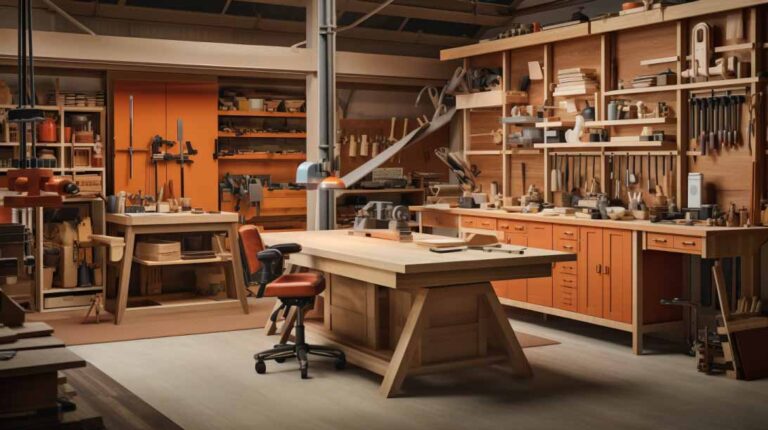Uncovering the secrets of eucalyptus timber grades and classifications can be like unravelling a mystery. With the right guidance, however, anyone can become an expert on this fascinating subject.
This in-depth guide provides a comprehensive overview of eucalyptus timber, including:
- Identifying different species
- Understanding timber grades
- Establishing the right grade for your project
- Finding the right supplier
- Ensuring quality and consistency of timber
- Safety considerations
- Timber preservation and treatment
- Exploring the benefits of eucalyptus timber.
With this guide, you can unlock the secrets of eucalyptus timber and gain the confidence to take full control of your next project.
Key Takeaways
- Understanding timber grades and classifications is important when working with Eucalyptus timber.
- Identifying different species of Eucalyptus trees is crucial for selecting the right timber type.
- Choosing the correct timber grade for a project requires considering various factors.
- Proper safety equipment and protocols should be followed when working with Eucalyptus timber.
Identifying Different Species of Eucalyptus Trees
By examining the physical characteristics of different species of eucalyptus trees, one can develop an understanding of the various timber grades and classifications available.
Common species of eucalyptus trees include E. saligna, E. globulus, E. nitens, E. delegatensis, and E. grandis. These species have distinct physical characteristics such as bark texture, color, and size.
E. saligna is characterized by stringy, fibrous bark that is pale gray in color.
E. globulus has smooth bark with shades of cream, gray, and brown.
E. nitens has a pale, yellowish bark that flakes off in long strips.
E. delegatensis has a grayish-brown bark that peels off in small flakes.
Finally, E. grandis has a yellowish-brown bark that is rough and fibrous.
By evaluating these characteristics, one can easily determine the grade and classification of the timber produced by these species.
Understanding the Different Types of Timber Grades
Analyzing the various timber grades is an essential part of understanding the nuances of the timber industry, allowing one to envision the potential of eucalyptus wood in many different applications.
The grading of timber is based on its strength, density, and visual characteristics, and is divided into two main categories: structural and appearance grades.
Structural grades are further divided into three classes: general, special, and non-structural, with each grade providing a different level of strength and durability.
Appearance grades are also divided into three classes: clear, select, and common, which determine the visual characteristics of the wood. Each grade has specific requirements regarding knots, splits, and other visual imperfections.
It is important to understand the different grades and classes of eucalyptus timber to make informed decisions.
Establishing the Right Timber Grade for Your Project
Choosing the right timber grade for a project is essential to achieving the desired results. It is important to understand the purpose of the project and the expected performance of the timber, in order to select the grade that fits the project specifications.
The timber grade should be chosen based on the expected use, the load bearing capacity, and its resistance to wear and tear. There are a variety of timber grades, ranging from lighter grades to heavy-duty grades, and each grade provides a different level of strength and durability.
For projects where the timber will be exposed to extreme conditions, such as marine environments or temperatures, it is important to select a grade that can withstand those conditions.
Additionally, the timber grade should be selected based on the availability of the timber in the local market, the cost of the timber, and the desired aesthetic result.
Ultimately, the right timber grade should be chosen to ensure that the project meets the desired specifications, while also being cost-effective and aesthetically pleasing.
Finding the Right Supplier
Identifying a reliable supplier is an essential step to ensuring the success of a timber project. To ensure the best outcome for a project, careful research is needed to find a supplier that specializes in the type of timber needed.
Factors to consider include:
- The supplier’s expertise and experience with the type of timber
- The reputation of the supplier
- The range of products they offer
- The cost of their products
Verifying the quality of the timber sourced from the supplier is also critical. In addition, suppliers should be able to provide advice and support on the selection of the right grade of timber.
Finally, it is essential to make sure that the supplier is able to deliver the timber on time and in the right quantities. Choosing the right supplier is an important part of any successful timber project.
Ensuring Quality and Consistency of Timber
Ensuring quality and consistency of timber is essential for successful timber projects, requiring careful consideration of both the source and grade of the timber.
Different timber sources may differ in their properties, so selecting the right source is paramount to success. Similarly, timber grades are determined by a number of factors, including the species, knots, grain, and other characteristics. It is important for buyers to understand the grading system, and ensure that the timber they purchase meets their needs.
Selection of the right grade will help to ensure that the timber is of consistent quality, and that it meets the requirements of the project. Furthermore, buyers should inspect the timber prior to purchase to verify that it meets their expectations.
With the right source and grade of timber, buyers can be confident that their timber will meet project requirements and provide successful outcomes.
Working with Different Types of Eucalyptus Timber
The quality and consistency of eucalyptus timber are key factors in determining the timber’s suitability for a variety of uses. Therefore, it is important to be familiar with different types of eucalyptus timber to ensure that the timber is suitable for the intended purpose.
Different types of eucalyptus timber vary in their characteristics, such as strength, density, and grain pattern. Additionally, certain types of eucalyptus timber may be more suitable for certain applications than others. It is important to understand the differences between different types of eucalyptus timber and their best uses to ensure that the timber is being used in the most appropriate way.
Additionally, different types of eucalyptus timber may have different grades and classifications that must be taken into account when selecting the timber. Understanding the different types of eucalyptus timber and their grades and classifications is essential for ensuring the highest quality and consistency of timber.
Safety Considerations for Working with Eucalyptus Timber
When working with eucalyptus timber, safety must be a primary consideration, as approximately 4.5% of all occupational fatalities in the United States are related to the timber industry.
It is essential to use the proper safety equipment and protective clothing, including safety glasses, gloves, hard hats, and ear protection. Additionally, all tools should be kept sharp and properly maintained.
Employers must ensure that their employees are trained in the proper safety protocols and that the relevant regulations are adhered to. Employers must also ensure that there are no risks of slips, trips, or falls, and that all workers are aware of any inherent dangers in the environment.
Finally, employers should ensure that workers are familiar with the relevant first aid protocols in the event of an accident. In sum, due to the potential risks associated with the use of eucalyptus timber, employers and workers must take the necessary steps to ensure the safety of everyone involved.
Timber Preservation and Treatment
Preserving and treating eucalyptus timber is critical for ensuring its long-term strength and stability. Preservation techniques can also extend the life of the timber and protect it from rot, decay, and insect attack. Treating timber involves applying preservatives, paints, stains, or oils to the surface, which can provide protection from the elements and enhance the timber’s aesthetic value.
| Benefits | Application | Maintenance |
|---|---|---|
| Protection from rot and decay | Pre-treatment | Regular inspection |
| Protection from insect attack | Preservation product application | Regular cleaning |
| Enhanced aesthetic value | Finish coating | Re-treatment |
Preservatives, paints, stains, and oils can all be used to treat eucalyptus timber, depending on the desired outcome. It is important to use appropriate products for the timber grade and species, as well as following application instructions carefully. Regular maintenance is also essential in order to ensure the timber’s ongoing protection and longevity.
Understanding Eucalyptus Timber Classifications
Gaining an understanding of eucalyptus timber classifications is essential for ensuring the highest quality results, as the old adage goes, ‘measure twice, cut once.
Eucalyptus timber is an extremely varied material, with specific characteristics that can make it an ideal choice for certain applications, yet unsuitable for others.
It is divided into four general categories of classifications: sapwood, heartwood, seasoning, and grade.
Sapwood is the outer, younger layer of the tree, and is lighter in color and softer than the heartwood, which is found at the center of the tree and is darker in color and more dense.
Seasoning is the process of drying the wood to reduce its moisture content and to make it more stable.
Grade is the measure of the timber’s strength, durability, and appearance.
Understanding these classifications can help one determine the most suitable eucalyptus timber for their project.
Exploring the Benefits of Eucalyptus Timber
Exploring the many advantages of eucalyptus timber can open up a world of possibilities for any project. The strong and durable wood is known for its resistance to rot and decay, making it suitable for outdoor use. Its high density and tight grain also make it an ideal material for furniture, cabinets, and other items that require more precision.
Additionally, eucalyptus timber offers:
- A distinctive look, with a range of colors and patterns
- Good dimensional stability
- Low shrinkage and swelling
- Low maintenance
- Eco-friendly production process
Frequently Asked Questions
What types of projects are best suited for Eucalyptus Timber?
Eucalyptus timber is used in a variety of projects, with roughly 90% of its usage in the construction industry. Structures such as decking, furniture, flooring, and roofing are all suitable for this durable hardwood. Additionally, eucalyptus is ideal for outdoor structures due to its resistance to rot and insect infestation.
How do I know if the Eucalyptus Timber I am purchasing is of good quality?
To determine the quality of eucalyptus timber, inspect the grain, texture, and color. Measure the moisture content and check for splits, knots, and other imperfections. Verify the timber grade and review the milling and finishing processes.
Is Eucalyptus Timber more expensive than other types of timber?
Eucalyptus timber is generally more expensive than other types of timber, due to its superior durability and strength. Cost may also depend on availability and region.
How quickly can I get a supply of Eucalyptus Timber?
With an extensive network of suppliers, you can acquire a supply of eucalyptus timber in no time. Yet the cost of such prestige may come at a premium, so be sure you’re prepared for the consequences.
Are there any special tools needed to work with Eucalyptus Timber?
Working with Eucalyptus timber may require specialized tools such as saws, planes, chisels, and drills. Care should be taken to ensure that the tools are of suitable quality to prevent damage to the timber.










